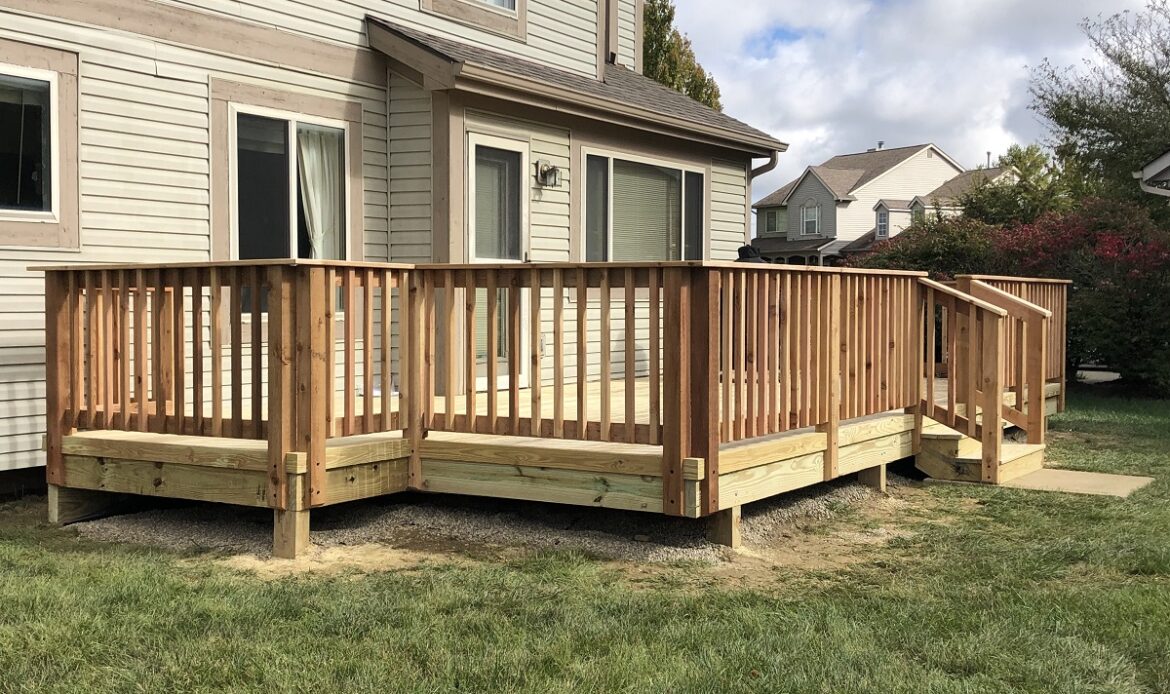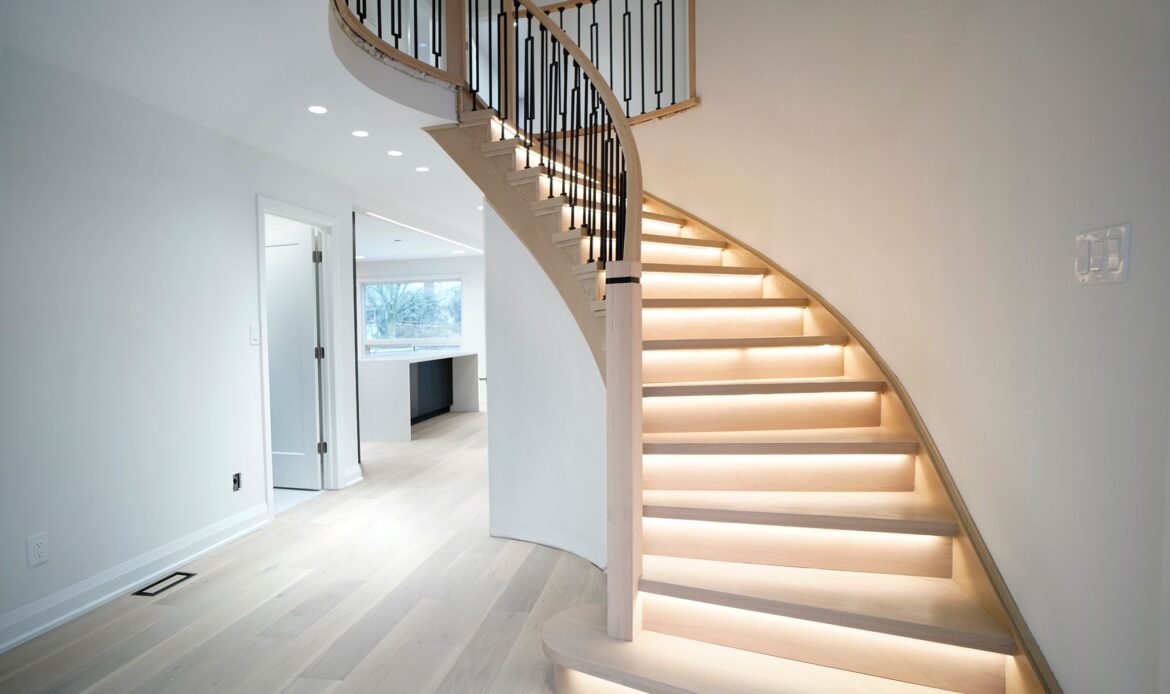Spring in Toronto and the GTA is the perfect time to breathe new life into your home. After months of cold weather, many homeowners feel inspired to refresh their living spaces, improve functionality, and enhance comfort. Preparing your home for a spring renovation is more than just choosing paint colours or furniture—it’s about setting the stage for a smooth, stress-free transformation that brings your vision to life.
Whether you’re planning a kitchen remodel, a basement upgrade, or a full home renovation, proper preparation is key. In this guide, we’ll walk you through essential steps to get your home ready for spring renovations—saving you time, money, and unnecessary headaches. Let’s make sure your project starts right and ends with results you’ll love for years to come.
Table of Contents
Why Preparing Early Matters (Key Reasons + Data)
If you’re planning a spring renovation in Toronto or the GTA, starting your preparations early can make a big difference in the success of your project. Home renovations involve more than just construction work—they require scheduling, budgeting, sourcing materials, and coordinating with contractors. When you begin planning ahead, you give yourself the advantage of time and flexibility.

1. Better Contractor Availability
In spring, reputable home renovation contractors book up quickly. By preparing months in advance, you have a higher chance of securing your preferred team and locking in ideal project dates. According to a 2024 Houzz survey, 60% of homeowners reported delays because they couldn’t get a contractor on time.
2. Smoother Permit Process
Many Toronto home renovation projects require permits, which can take weeks to get approved. Applying early ensures your project can start right on schedule without costly delays.
3. Material Lead Times
With increased demand in spring, certain materials—like custom cabinetry or imported tiles—may have longer delivery times. Ordering early ensures everything is ready when construction begins, avoiding project slowdowns.
4. Lower Stress and Costs
When you prepare your home early for renovation, you avoid last-minute decisions that can lead to rushed choices and overspending. Proper planning gives you time to compare prices, negotiate quotes, and make informed decisions.
Data Insight: In the GTA, homeowners who planned renovations at least 3–4 months in advance were 40% more likely to finish their projects on time and within budget compared to those who started preparations later.
By getting ahead of the rush, you not only improve your chances of a smooth renovation but also increase the likelihood of achieving your dream space exactly as you envisioned.
Timeline — When to Start Planning (90–180+ Days Plan)
For a successful spring renovation in Toronto, the best time to start planning is three to six months in advance. This window gives you enough time to finalize designs, secure permits, book contractors, and order materials—without rushing. Here’s a breakdown of how to approach the process:
180+ Days Before (6+ Months) – Vision & Research
- Define your renovation goals (kitchen upgrade, bathroom remodel, whole-home makeover, etc.).
- Research design styles, materials, and trends that match your taste.
- Set a realistic budget and include a contingency of 10–15% for unexpected costs.
- Start shortlisting local renovation contractors in Toronto and check their reviews, past work, and availability.
120 Days Before (4 Months) – Contractor & Design Stage
- Finalize your choice of contractor and secure your renovation dates.
- Work with your design team or architect to complete floor plans and specifications.
- Apply for necessary city permits—especially important for structural changes or major remodels.
- Begin sourcing materials with longer lead times, like custom cabinetry, specialty flooring, or imported tiles.
90 Days Before (3 Months) – Ordering & Preparation
- Confirm all material orders to ensure they arrive before the start date.
- Plan temporary living arrangements if your renovation will disrupt daily routines.
- Start organizing your home—declutter, pack away valuables, and protect items in non-renovation areas.
- Communicate with your contractor to review the timeline and address any last-minute questions.
Pro Tip: Many experienced Toronto homeowners start closer to the 180-day mark to secure the best contractors and avoid delays caused by backlogged suppliers or permit processing times.
Starting your spring renovation planning early not only keeps the project on schedule but also helps you avoid the peak-season rush, ensuring a smoother and more cost-effective transformation.
Permits & Paperwork — Toronto / Ontario Specifics
Before starting your spring renovation in Toronto, it’s essential to understand local permit requirements. In Ontario, most major renovations—especially those involving structural changes, plumbing, electrical work, or additions—require approval from your municipal building department. Skipping permits can lead to costly fines, work stoppages, or complications when selling your home.

When a Permit Is Required
You’ll likely need a building permit if your project involves:
- Structural changes (removing or altering load-bearing walls)
- Adding or modifying rooms, decks, or secondary suites
- Significant plumbing or electrical updates
- Basement finishing involving insulation and ventilation changes
- Major exterior work like window enlargement or roofline changes
For purely cosmetic upgrades—like painting, replacing flooring, or updating cabinets—permits aren’t typically needed.
How to Apply in Toronto
- Prepare Your Plans – Detailed drawings must meet the Ontario Building Code standards.
- Submit Through Toronto’s ePlans System – This allows you to apply online, track status, and submit revisions.
- Pay Applicable Fees – Costs vary depending on the project’s size and scope.
- Wait for Approval – Processing can take anywhere from 2 to 6 weeks, longer during busy seasons.
Other Paperwork to Consider
- Heritage Property Approvals – If your home is designated under the Ontario Heritage Act.
- Zoning By-law Compliance – Ensuring your renovation fits local land-use rules.
- Contractor’s Insurance & WSIB Clearance – Protects you from liability during the project.
Pro Tip: Start your permit process at least 90–120 days before your planned renovation date to avoid delays—especially in spring when Toronto’s building department sees higher application volumes.
Taking care of permits and paperwork early ensures your renovation is legally compliant, safe, and hassle-free—setting the stage for a smooth spring home transformation.
Budgeting & Cost Planning for Spring Renovations
A well-planned budget is the backbone of any successful spring renovation in Toronto. Without it, costs can spiral quickly—especially when seasonal demand increases labour and material prices. Planning ahead ensures you can achieve your vision without financial stress.
Step 1: Determine Your Renovation Priorities
Start by identifying which upgrades are must-haves versus nice-to-haves. This helps you allocate funds where they matter most—whether that’s a kitchen remodel, bathroom upgrade, or exterior improvement.
Step 2: Research Average Costs in Toronto
Home renovation costs in the GTA can vary widely:
- Kitchen renovation: $20,000 – $60,000+
- Bathroom remodel: $12,000 – $30,000
- Basement finishing: $35 – $55 per sq. ft.
- Exterior upgrades: $10,000 – $50,000+
(These are estimates; your actual costs will depend on materials, scope, and contractor rates.)
Step 3: Get Multiple Quotes
Request detailed estimates from at least three local contractors. Look for transparent pricing that includes materials, labour, permits, and any potential hidden costs.
Step 4: Plan for Seasonal Price Surges
Spring is a busy renovation season in Toronto. Materials like lumber, tiles, and windows can cost more due to high demand. Booking early often locks in better pricing.
Step 5: Include a Contingency Fund
Always set aside 10–15% of your total budget for unexpected expenses—such as hidden structural damage, weather-related delays, or last-minute design changes.
Step 6: Track Spending Throughout the Project
Use a simple spreadsheet or budgeting app to monitor costs. This helps prevent overspending and allows you to make quick adjustments if needed.
Pro Tip: Working with a reputable, experienced renovation company like Ahoora Homes can help you get accurate cost estimates, stay on budget, and avoid costly mistakes.
Proper budgeting ensures your spring renovation is not only beautiful but financially stress-free—allowing you to enjoy your upgraded home without lingering debt.
Budgeting & Cost Planning for Spring Renovations
Careful budgeting is one of the most important steps in preparing for a spring renovation in Toronto. Without a clear plan, it’s easy for costs to climb higher than expected—especially when seasonal demand pushes up material and labour prices. A solid budget ensures your renovation stays on track, delivers the results you want, and avoids financial stress.
1. Define Your Renovation Goals First
Before calculating costs, decide exactly what you want to achieve. Are you upgrading your kitchen, modernizing your bathroom, or giving your home’s exterior a facelift? Prioritizing “must-have” improvements over “nice-to-have” upgrades helps you focus your budget where it matters most.
2. Research Local Cost Averages
In Toronto and the GTA, renovation prices can vary based on size, complexity, and finishes:
- Kitchen renovations: $20,000 – $60,000+
- Bathroom remodels: $12,000 – $30,000
- Basement finishing: $35 – $55 per sq. ft.
- Exterior work: $10,000 – $50,000+
These figures are averages; high-end finishes or custom designs can increase costs significantly.
3. Get Multiple Quotes
Contact at least three reputable contractors and request itemized estimates that include labour, materials, permits, and any potential extras. This helps you compare fairly and avoid hidden fees.
4. Account for Seasonal Pricing
Spring is a peak renovation season in Toronto. Materials like lumber, windows, and fixtures may cost more due to higher demand. Booking your project early can sometimes secure better rates.
5. Include a Contingency Fund
Unexpected expenses are common in renovations—especially in older homes. Setting aside 10–15% of your total budget ensures you can handle surprises like hidden water damage or structural issues without stress.
6. Track Your Spending
Once your project starts, monitor expenses closely. A simple spreadsheet or budgeting app can help you stay within your limits and make adjustments quickly if something changes.
Room-by-Room Preparation Checklist for a Spring Renovation
Preparing each space in your home properly before a spring renovation not only speeds up the work but also reduces stress and costly delays. This step-by-step checklist will help you get your home ready room by room so your contractor can start right away.
1. Kitchen Preparation
The kitchen is often the most complex room to renovate due to plumbing, electrical, and cabinetry work.
Action Steps:
- Clear cabinets and drawers: Pack all dishes, cookware, and pantry items into labeled boxes.
- Set up a temporary kitchen: Use a small table, microwave, and portable cooktop in another room to keep life running smoothly.
- Shut off water and gas lines (if required): Coordinate with your contractor to avoid accidents.
- Protect appliances you’re keeping: Wrap them in protective covers or move them to a safe area.
2. Bathroom Preparation
Bathrooms require special attention to protect fixtures and prevent water damage during work.
Action Steps:
- Empty cabinets and vanities: Store toiletries, towels, and cleaning products elsewhere.
- Turn off water supply: Confirm with your plumber or contractor before demolition starts.
- Remove fragile décor: Take down mirrors, wall art, or shelves that could be damaged.
- Arrange alternative bathroom access: Especially important if you have only one bathroom in the house.
3. Living Room & Common Areas
These spaces are often central to your home and may double as work zones during renovations.
Action Steps:
- Move furniture to storage or cover it with dust-proof sheets.
- Take down electronics: Remove TVs, speakers, and gaming consoles to avoid dust damage.
- Roll up or remove rugs: Dust and debris can ruin fabrics.
- Protect flooring: Lay down protective boards or tarps for heavy traffic areas.
4. Bedrooms
Renovations can affect sleep spaces if they’re near the work area.
Action Steps:
- Relocate sleeping arrangements: If noise or dust is an issue, consider staying in a guest room or with family temporarily.
- Pack away valuables and personal items: This keeps them safe and avoids loss.
- Seal closets: Use plastic covers to protect clothing from dust.
5. Basement
Basements often serve as storage and may be renovated into functional living spaces.
Action Steps:
- Clear the area completely: Remove stored boxes, tools, or seasonal décor.
- Check for moisture issues: Resolve leaks before starting renovations.
- Ensure clear access: Contractors need an unobstructed path for materials and tools.
6. Outdoor Spaces (if your renovation includes exterior work)
Exterior renovations can impact gardens, patios, and driveways.
Action Steps:
- Relocate outdoor furniture and grills.
- Protect landscaping: Use tarps or temporary fencing around plants.
- Clear driveway access: Make space for contractor vehicles and material deliveries.
Materials & Lead Times — Plan for Supply Chain Reality
One of the biggest surprises homeowners face during a spring renovation is how long it can take for materials to arrive. Even if your project is ready to start, delays in supply can put your entire renovation schedule on hold. Planning early and ordering in advance can help you avoid costly downtime.
1. Understand Current Lead Times
Supply chain issues still affect many industries, and in Canada, certain building materials can take weeks—or even months—to arrive.
Common lead times for popular renovation materials:
- Custom cabinetry: 8–12 weeks
- Countertops (quartz, granite): 3–6 weeks
- Windows & doors: 10–16 weeks (longer in peak seasons)
- Flooring: 2–8 weeks depending on material availability
- Appliances: 4–12 weeks for high-demand models
2. Order Early to Avoid Delays
To keep your spring renovation on schedule, place orders at least 2–3 months before work begins. This ensures your contractor has everything ready when the project kicks off.
3. Prioritize Key Materials
Focus first on items that have the longest lead times or are critical to the project’s timeline, such as:
- Windows & doors (needed early in builds and remodels)
- Kitchen cabinets & vanities
- Specialty fixtures like custom lighting or hardware
4. Have Backup Options Ready
If a product you’ve chosen becomes unavailable, having a pre-approved alternative can save weeks of delays. For example, if your first-choice tile is on backorder, select a similar style from a different supplier.
5. Factor in Shipping & Local Supplier Schedules
Some Toronto and GTA suppliers may have shorter lead times for in-stock materials compared to ordering from overseas. Work with local vendors when possible to speed up delivery and reduce shipping costs.
Conclusion
Preparing your home for a spring renovation in Toronto isn’t just about picking paint colours and designs—it’s about careful planning, budgeting, and timing. By starting early, securing permits, ordering materials ahead, and following a clear preparation checklist, you can avoid costly delays and stress. Ahoora Homes specializes in turning your renovation vision into reality with precision and quality craftsmanship. Whether it’s a full home remodel or a single-room upgrade, being well-prepared ensures a smooth and successful transformation. This spring, give your home the upgrade it deserves and enjoy a space that’s both beautiful and functional.
FAQs — Preparing Your Home for a Spring Renovation in Toronto
-
When should I start planning my spring renovation in Toronto?
It’s best to start planning 90–180 days before your desired start date. This allows time for design decisions, permit approvals, contractor scheduling, and ordering materials with long lead times.
-
Do I need a building permit for my spring renovation in Toronto?
Yes, many projects—such as structural changes, additions, or major remodels—require permits from the City of Toronto. Always check with your contractor or local building department before starting.
-
How can I avoid delays during a home renovation?
Order materials early, have backup product options, and work with a reliable contractor who manages timelines effectively. Early preparation is key to keeping the project on track.
-
What’s the average cost of a spring renovation in the GTA?
Costs vary based on project scope, but a kitchen remodel may range from $25,000–$60,000, while a full home renovation can exceed $150,000. Proper budgeting ensures you’re financially prepared.
-
What’s the biggest mistake homeowners make when preparing for a renovation?
Many wait too long to start planning. Delays in permits, contractor availability, and material deliveries can push your renovation months beyond your intended schedule.
1.
2.
3.
4.
5.

